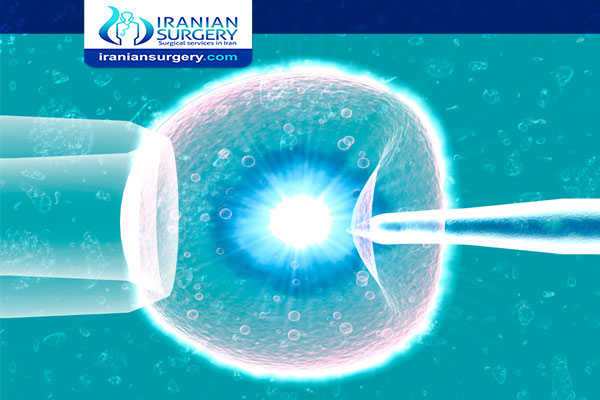What is hatching IVF?
How is the Hatching procedure?
Hatching prescriptions and success rate
When is assisted hatching done in IVF?
Does assisted hatching increase chances pregnancy?
Is assisted hatching necessary?
Can assisted hatching cause twins?
How long does it take for a hatching blastocyst to implant?
What is hatching IVF?
Failure of IVF process or IVF fertilization can be frustrating, which is usually due to a failure of the embryo to implant. For women who have had at least one failed IVF course, a fertility specialist may recommend a hatching procedure to help conceive implantation. In this post you will be introduced to the technique of hatching and improved implantation in IVF method.
Read more about: Embryo hatching after thaw
Read more about : What are the Biggest Differences between IUI and IVF?
How is the Hatching procedure?
In IVF treatment, after fertilization of the egg in the laboratory, cell division begins. In the early stages of development, embryos are surrounded by a protein coating called zonaplusidae. In order to continue implantation in the uterine wall, embryos must be excluded from the zona pellucid protein coating.
In normal fertility, this layer is made thinner by the enzymes secreted by the embryo and the uterus and allows the embryo to adhere to the uterine wall. In the IVF method, some factors such as maternal age and high levels of vacuum in the mother's blood may prevent the skin from thinning and reduce the chance of implantation.
Scientists' research on IVF has shown that embryos with thinner zonaploid skin have been more successful in implantation. For this reason, experts have developed a new technique for artificial thinning of this layer to improve the chance of implantation in IVF. Hatching is a laboratory method in which a neurologist under a microscope using a laser or chemicals thin the skin of the embryo's zona pellucid to aid implantation in the uterus after transplantation. Hatching is usually performed on the fourth day of embryo development, which is divided into six to eight cells on average. The hatching process is performed in the laboratory before the embryo is transferred and does not require the presence of the mother.
Read more about : Can you have twins with ICSI?
Read more about : How much does 1 round of IVF cost in Iran?
Hatching prescriptions and success rate
The hatching technique can help couples whose embryos may not have enough energy to tear the shell and implant. Hatching techniques are usually recommended to women in the following situations:
- Ages over 37 years old
- Two failed periods of IVF or more
- In cases of frozen embryo transfer
- Low embryo quality and slow growth and inadequate
This technique increases the chances of success in people who have had two failed IVF rounds. The results of one study showed that with all the women in the study, hatching increased the percentage of embryos adhering to the uterine wall, especially in women over the age of 37 or women with higher than normal levels.
Because hatching or laser hatching is a modern and difficult technique, its success depends on the expertise and skill of the psychologist. For this reason, it is advisable to ask your doctor if your doctor recommends hatching for the clinic's success and ability.
When is assisted hatching done in IVF?
Assisted hatching is generally performed on the third day of embryo development. The embryologists use a laser to create a very small hole in the zona pellucida. Assisted hatching can also be done on previously frozen and thawed embryos.
Read more about : Intrauterine Insemination (IUI)
Read more about : Zift infertility treatment
Does assisted hatching increase chances pregnancy?
Assisted hatching is a procedure where we can help the embryo “hatch” from its “shell” by creating a small crack in the zona pellucida. It is believed that assisted hatching can help an embryo implant in the uterus, leading to higher pregnancy rates in some patients. Assisted hatching is a newer lab technique that was developed when fertility experts observed that embryos with a thin zona pellucida had a higher rate of implantation during IVF. With assisted hatching, an embryologist uses micromanipulation under a microscope to create a small hole in the zona pellucida.
Is assisted hatching necessary?
Assisted hatching is not recommended for all patients, but may be helpful in women who are older (more than 37 years old) or who have had a prior IVF failure. A Cochrane review on assisted hatching—that considered 31 studies, totaling 1,992 pregnancies, and 5,728 women—found that assisted hatching just slightly improved clinical pregnancy rates.
Can assisted hatching cause twins?
The risk for identical twins might be slightly increased when assisted hatching is applied. Medical complications are higher in identical twin pregnancies than in normal, singleton pregnancies.
How long does it take for a hatching blastocyst to implant?
In the case of in vitro fertilization (IVF), the fertilized eggs or human blastocysts normally hatch out of their shell and start to implant about 1 or 2 days after the 5th day of the IVF blastocyst transfer. This means the implantation takes place about 7 to 8 days after fertilization of the egg. The time required for implantation in both the cases, normal pregnancy and pregnancy through IVF, is more or less the same.
Read more about: Is assisted hatching necessary
Read more about: Does assisted hatching help implantation?
Read more about: when is assisted hatching done in IVF
Read more about: assisted hatching success
Read more about: assisted hatching success


